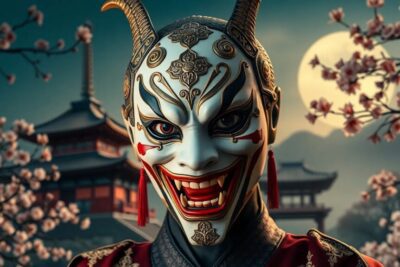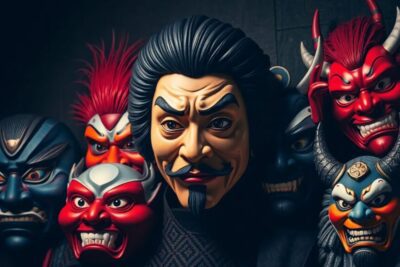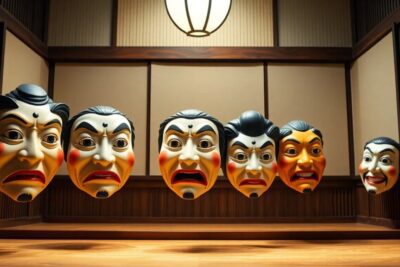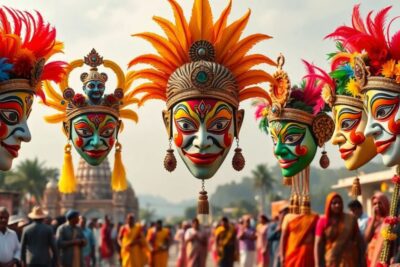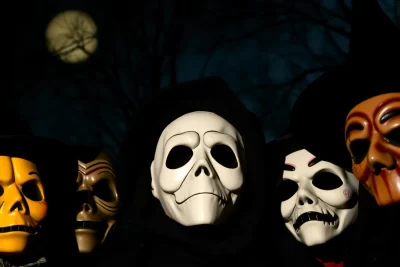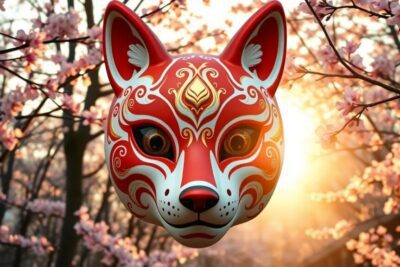
Famous Masks and Their Unique Features Explained
Masks have been an integral part of human culture for centuries, transcending geographical and temporal boundaries. They serve various purposes, from rituals and ceremonies to artistic expressions in theater and film. Masks not only conceal identities but also reveal deeper meanings tied to cultural beliefs, social roles, and artistic creativity. In this exploration of famous masks from around the world, we delve into their significance, history, and the diverse contexts in which they are used.
Kitsune mask: Symbolism in Japanese Culture
The Kitsune mask represents the fox, a creature deeply embedded in Japanese folklore. In this tradition, foxes can embody dualities—both benevolent and malevolent. They are revered as messengers of Inari, the Shinto deity associated with rice and agriculture. This connection links the Kitsune to prosperity and fertility, making it a symbol of wealth.
These masks are often decorated with intricate details that signify the fox's mystical nature. During festivals and rituals, wearing a Kitsune mask allows individuals to channel the spirit of the fox, celebrating its role as a guardian of the harvest. The dual nature of the Kitsune also reflects the complexity of human emotions and relationships, encapsulating both joyous and painful experiences.
Hannya mask: The Face of Jealousy
The Hannya mask is a powerful representation of a female demon, embodying the emotions of jealousy and rage. Found primarily in Noh and Kyōgen theater, this mask features a haunting expression with sharp teeth, bulging eyes, and devil-like horns. It tells the story of a woman who transforms into a demon due to betrayal and heartbreak.
This mask's intricate design serves a dual purpose: it captures the viewer's attention while evoking empathy for the character's tragic fate. The Hannya mask reflects the complexities of human emotions, illustrating how love can turn into jealousy and despair. In performances, it is often paired with beautiful music and dance, enhancing the emotional depth of the story being told.
Japanese masks: A Cultural Tapestry
Traditional Japanese masks are not just artistic creations; they carry profound cultural significance. Used in various settings such as theater, festivals, and religious rituals, these masks connect to folk myths and narratives. They depict a wide range of characters, including gods, demons, and animals.
- Gigaku: Ancient masks used in dance dramas.
- Kappa: Water spirits often portrayed in humorous plays.
- Oni: Demonic figures symbolizing evil.
- Kabuki: Masks that feature exaggerated facial expressions for dramatic effect.
Each mask type serves a unique purpose, reflecting the beliefs and values of Japanese society. They are crafted with great care and artistry, often made from wood, fabric, or paper, showcasing the skill of traditional artisans.
Noh masks: The Art of Emotion
Noh masks are exquisite pieces of art, meticulously carved from a single block of wood and painted with natural pigments. These masks represent age, gender, and social status, allowing performers to convey complex emotions in a stylized manner. With over 60 distinct types, each mask possesses a unique name and story.
What makes Noh masks particularly fascinating is their ability to evoke multiple emotions depending on the angle from which they are viewed. This dynamic quality encourages the audience to engage their imagination, making each performance a unique experience. The subtlety of expression in Noh theater, enhanced by the masks, is a testament to the depth of Japanese performing arts.
Death mask: The Final Tribute
The death mask is a haunting artifact created from the face of a deceased individual, typically made from plaster or wax. This practice dates back to ancient civilizations and has been used to honor the dead. By creating a lifelike representation, these masks serve as a memento mori, reminding the living of mortality.
Death masks have been significant in various cultures, often placed on the deceased before burial rituals. They can also serve as molds for portraits or commemorative pieces, preserving the memory of influential figures. Famous examples include the death masks of notable historical figures, such as Napoleon Bonaparte and William Shakespeare, each providing a glimpse into the past.
Indian masks: Spiritual Expressions
In India, masks play a vital role in cultural and spiritual practices. Often used in ceremonies, rituals, and theatrical performances, these masks are believed to channel the spirits they represent. They are crafted from diverse materials, including wood, metal, and fibers, and are richly adorned with paint, feathers, and beads.
- War masks: Used during battles to invoke courage.
- Healing masks: Worn by shamans to facilitate spiritual healing.
- Ritual masks: Integral to ceremonies marking life transitions.
In Native American cultures, wearing a mask is seen as a transformative experience, connecting the wearer to the spiritual realm and the ancestors. These masks are often integral to storytelling, helping to convey important cultural narratives.
Scold's bridle: A Tool of Punishment
Unlike traditional masks, the scold's bridle was a device of punishment rather than performance. This iron muzzle, designed to publicly humiliate women accused of being scolds or witches, served as a grim reminder of societal norms. Victims would be paraded through town, enduring public shame for their perceived transgressions.
This historical artifact reflects the darker aspects of societal control, showcasing how masks can also symbolize oppression and punishment. The scold's bridle serves as a reminder of the lengths to which societies have gone to enforce conformity and silence dissenting voices.
Halloween masks: Embracing Fear
Halloween, rooted in the ancient Celtic festival of Samhain, brings forth the tradition of wearing masks to ward off evil spirits. Celebrated on October 31st, this night is believed to be when the boundary between the living and the dead is thinnest.
Halloween masks aim to evoke fear, transforming wearers into frightening figures to scare away malevolent entities. They range from traditional spooky designs to contemporary pop culture references, reflecting changing societal attitudes towards death and the supernatural.
Theater masks: Expressions of Drama
Theater masks are vital tools in performing arts, particularly in storytelling. They allow actors to embody their characters fully, often enhancing the emotional delivery of performances. The two most iconic forms are the tragic and comic masks, representing the duality of human experience.
- Tragic masks: Characterized by sorrowful expressions, they highlight the darker aspects of life.
- Comic masks: Featuring exaggerated smiles, they embody humor and levity.
These masks not only serve aesthetic purposes but also facilitate audience connection, bridging the gap between performer and spectator through shared emotional experiences.
Greek masks: The Foundation of Theater
Ancient Greek masks played a crucial role in theatrical performances, dating back to the classical era. Used in ceremonies and celebrations, these masks allowed actors to portray various characters, from gods to mortals. The iconic design of Greek masks helped amplify voices and emotions, making them essential in large amphitheaters.
These masks are also significant in the context of Greek mythology, as they often represent larger-than-life personas and moral lessons. The legacy of Greek masks continues to influence modern theater, serving as a reminder of the enduring power of performance art.
Famous masks in history and art
Throughout history, masks have left an indelible mark on art and culture. From ancient civilizations to contemporary works, they serve as powerful symbols and artistic expressions. Some notable masks include:
- The Mask of Tutankhamun: An exquisite burial mask from ancient Egypt.
- Venetian Carnival Masks: Known for their ornate designs and rich history.
- Frida Kahlo's Masks: Reflecting her identity and cultural heritage.
These masks transcend their physical forms, telling stories that resonate across time, culture, and artistic mediums.
You Might Also Like 👇
